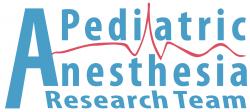Thank you for your interest in our studies. Please return shortly, this page is being updated.

Donate to Research
We believe there’s nothing we can’t do with your support. It can take years to turn scientific breakthrough into new interventions and treatments. Funding helps speed the pace of change. When given the resources, we can bring transformative therapies – and hope – out of the laboratory and into the clinic to save and improve children’s lives.